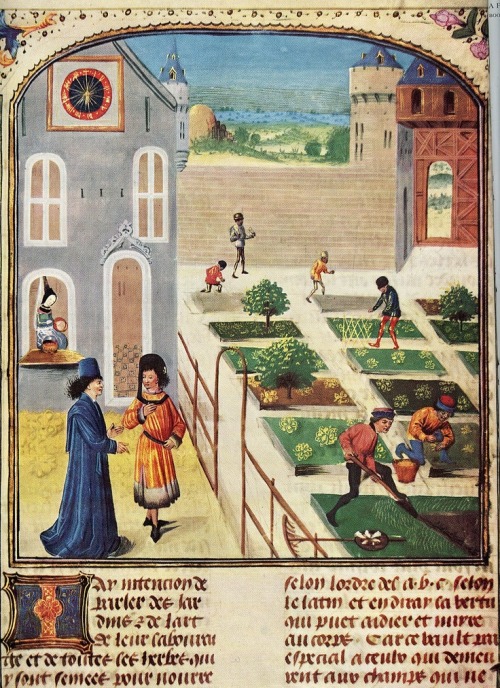02: Food and Production: more Basics
Environment; climate
Population
Other factors: medical knowledge; religion; social factors
Annales School
Fernand Braudel (1902-85)
longue durée
George Duby (1919-96)
Sources: Textual; Documentary
Documentary: institutions
More on Food and Diet: protein, fruits, vegetables
Meat: production, market, preservation
Pork:

- Diet: forest (acorns); farmyard
- Preservation: ham, sausage, bacon
- Purpose on farm: food
Beef

Tuscan Chianina cattle
- Expensive to raise on grain, grass
- Purpose on farm: milk; draft animals; hence traditionally slaughtered when aged
- Late medieval market: younger animals, including calves (veal)
Sheep
Ghent ca 1500. Rothschild Hours, British Library, Detail of a bas-de-page scene of peasants shearing sheep, Add MS 35313, f. 4r
- Ubiquitous
- Purpose on farm: milk (cheese); wool; hence traditionally slaughtered when aged
- Later medieval market: younger animals
Goats
mostly in southern Europe, mountainous regions
Poultry: eaten but more expensive, smaller than modern equivalents
- Purpose on farm: eggs. Hens traditionally slaughtered when aged
- Roosters; capons
Game: eaten more by nobles than by peasants by later Middle Ages
Fish: fast days
|
catching herring in Sweden |
|

Herring vendor, Paris, ca 1500
Cris de Paris, vers 1500. Paris, BnF, Arsenal, Est. 264 Rés. Fol. 15, pl 13
- Access varied enormously by region
- Fresh water: fishponds
- Salt: herring; stockfish; baccalà (first recorded in Venice 1431)
Dairy:
- Milk (rural): spoilage
- Butter
- Cheese
Eggs ubiquitous

Beverages:
- Wine: increasing role for markets: specialization by region, fortified wines; more elite
- Beer: less elite, drunk in areas with little or no wine; local regulation by city; often consumed socially
- Cider etc: regional
Coffee, tea: coffee very late 16th c; tea 17th c
Legumes: fast days
No New World beans
South: Favas, lentils, chickpeas, black-eyed peas
North: field pea
Higher status in more affluent times (otherwise associated with austerity)
Vegetables

French, 15th c

Herbs in an urban garden

Some available from antiquity; others introduced ca 1200+
Squash, tomatoes, pepper, potatoes, many bean varieties: New World
Cohl crops: cabbage broccoli, cauliflower
16th c: brussels sprouts, kohlrabi
Cucumbers
Asparagus
Eggplants
Parsnips, beets, turnips
Carrots: later Middle Ages
Onion, garlic
Lettuce, other greens
Spinach: from Muslim Spain
Fruits:
Citrus no limes or grapefruits; others came in via Spain
Tree fruits, berries
Strawberries alpines only
Grapes
Melon
An exemplary study: Ramon Banegas-Lopez on meat eating 1300-1500
What meats did people eat most often in Europe?
How did that change?
How do we know?


